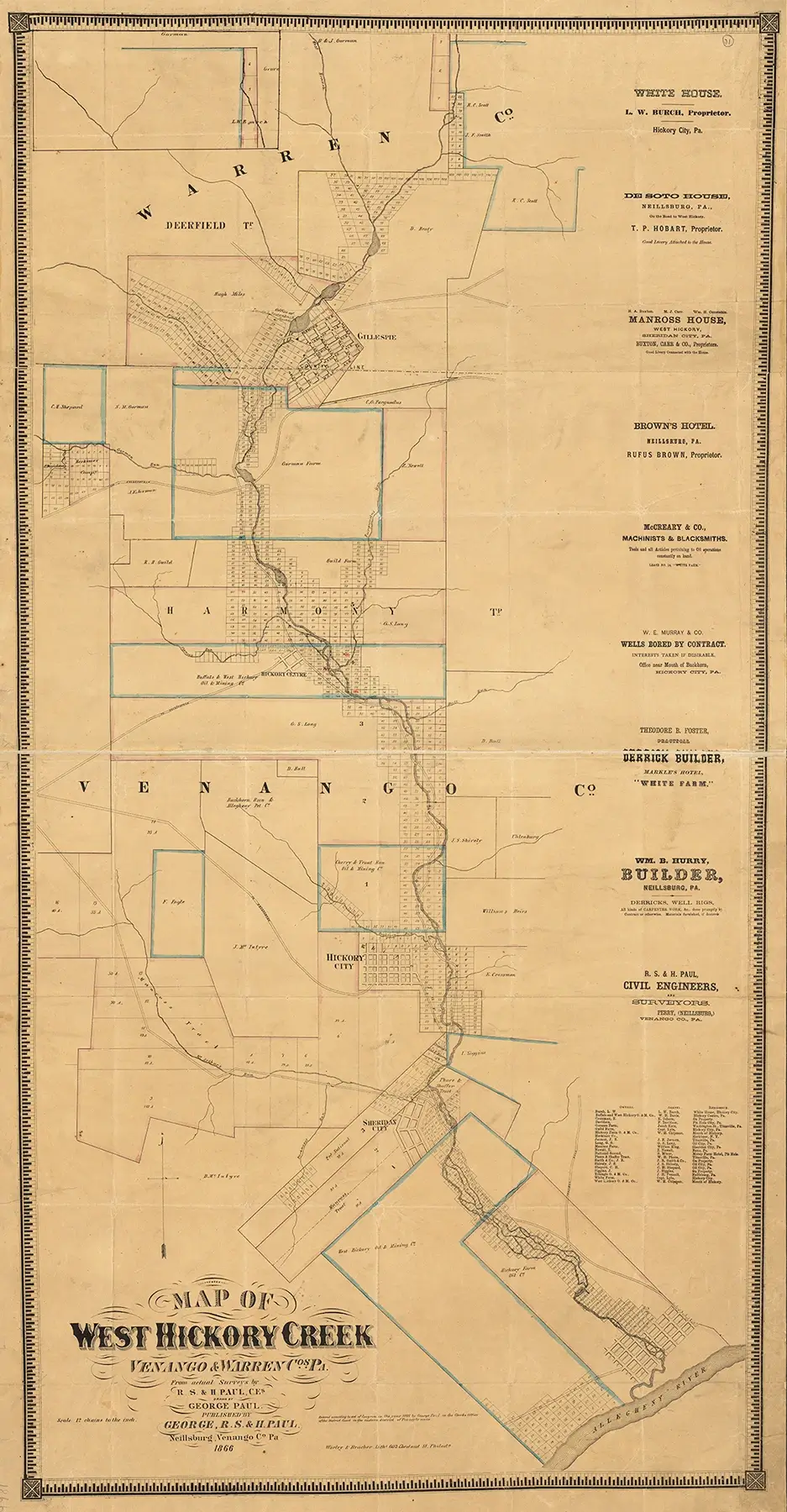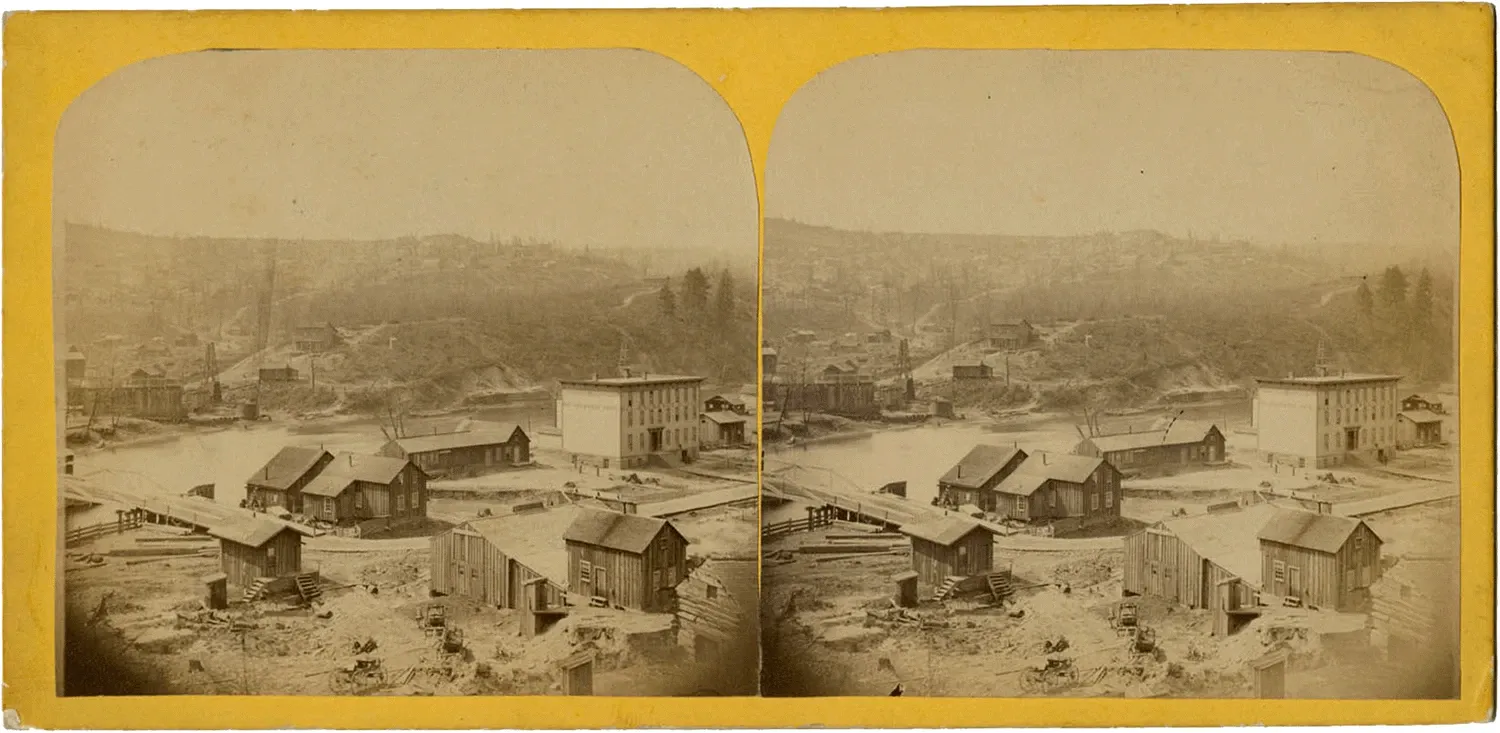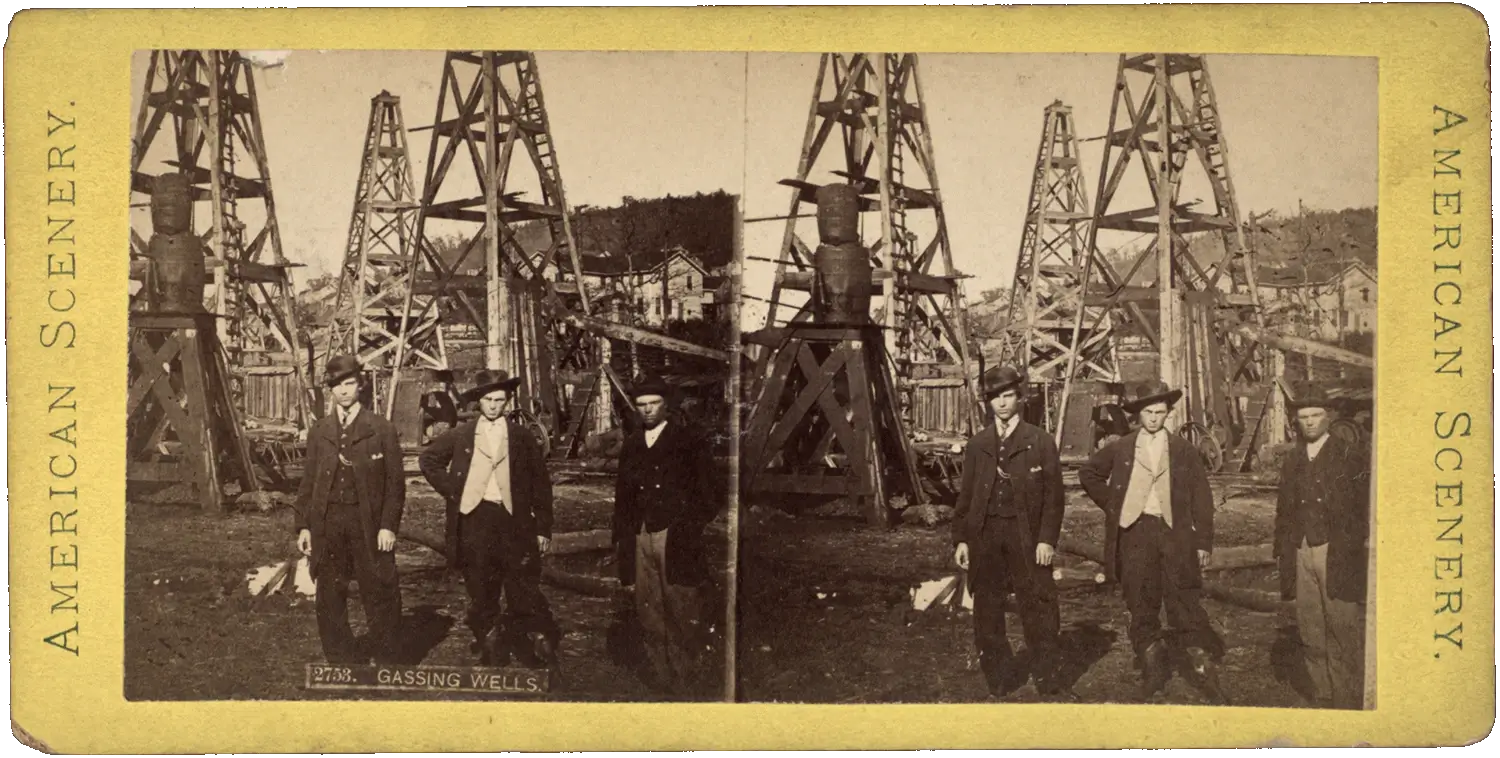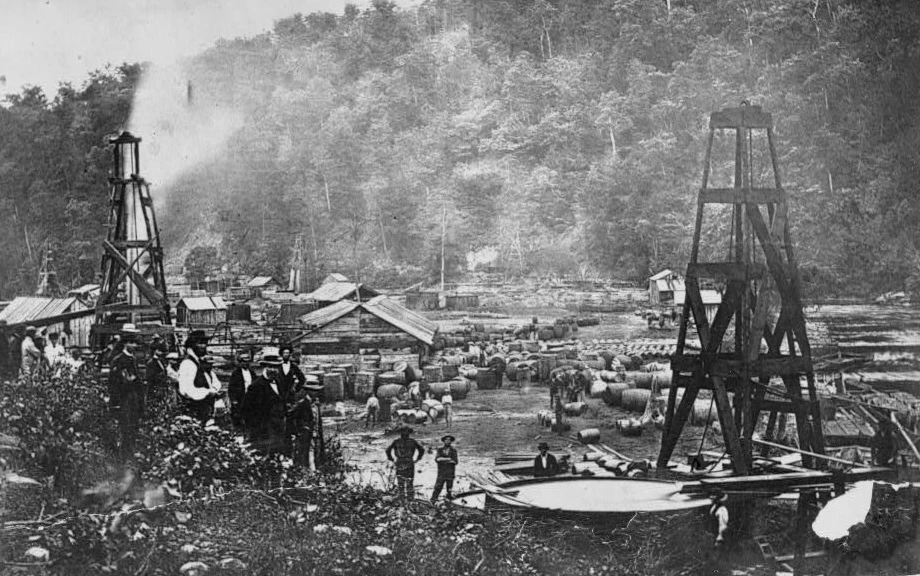Oil Intelligence
Pittsburgh Commercial, March 5, 1866
The opening of navigation on the Allegheny has given an impetus to the oil trade, that will have a beneficial effect not only upon dealers here but upon operators in the oil region. For some weeks past dullness has pervaded Pithole, Oil City, and the old established petroleum centers of the Venango region, which may be attributed, however, to the severity of the weather. During this dull season, shrewd financiers have visited the heavy yielding localities in that region, and quietly invested in flowing wells, while other enterprising businessmen prospected for new developments. Operations on Pithole Creek continue to be exceedingly encouraging, particularly on the Holmden, Morey and McKinney farms.

Blackmer Farm
A new feature in oil production has recently been made known on the Blackmer Farm, at the junction of the Pithole and West Pithole Creek, which has attracted large crowds to visit it. It seems that last fall a well put down to the depth of some 800 feet on Lease C, Blackmer Farm, at the junction of West Pithole with Pithole Creek, but the parties holding the working interest, it is presumed, became discouraged and discontinued operations, without having tubed and tested it. A few days since a man at work for the Reno Railroad Company, while passing the derrick, discovered the oil running over the top of the driving pipe. Some time when the gas is not so strong the oil recedes, or settles down, several feet below the top of the pipe, where it can be dipped off by the gallon.
West Hickory
The new oil territory on West Hickory is attracting the attention of very many of the oldest and most successful operators. The comparatively slight expense of sinking wells, finding oil at from 150 to 225 feet, the few failures, and the quality of the oil, are great inducements, and will make this region one of the most desirable tor sale and good paying inducements. The developments on the Manross and John White Farms are of the most flattering character, several new wells having been struck recently. The editor of the Pithole Record paid West Hickory a visit last week and found matters pertaining to oil developments manifesting increasing activity. Derricks are rapidly going up, lumber, engines and engine rigs hourly arriving, and everything looking up.
Large numbers of operators from different parts of the oil regions are prospecting, and many investing. We notice quite a number of them — perhaps the larger portion — have been operating in Pithole and its immediate vicinity and now are also trying their hand at West Hickory. A number of wells are almost ready to test, and others about testing. Oil is generally found at a depth of from one hundred and eighty to two hundred and thirty feet and upwards. If the price of oil should advance to render oil producing more profitable. West Hickory and vicinity would undoubtedly prove to be among the best of our oil territory.

Dennis Run
On the property of the Tidioute and Warren Company, on Dennis Run, there are thirteen producing wells, which yield in the aggregate five hundred and thirty barrels. A correspondent says:
“There are now eighteen producing wells altogether on Dennis Run, and as every well on this stream that has been sank to the second sand rock, with perhaps one or two exceptions, has proved to be a paying concern, we think the prospects of those who are here seeking for hidden treasures are very encouraging. The wells bored in the upper part of this valley have proved to be the most productive, and this fact has induced a great many persons to commence operations high up on the hills, or mountains, on both sides of the run. In fact, quite a number of leases have been taken, and operations commenced on top of the hills, which are one hundred feet above the level of the river. All are confident that they will find oil as certainly and in as large quantities, by boring on the hilltops, as by boring the lowest part of the valley — the only difference being that they will have to bore as much deeper, as they start higher. There will be a great many wells put down during this year on Dennis Run on West Hickory, and on the territory intervening between these streams.”

Slippery Rock
The New Castle Journal thus notices operations on Slippery Rock and the Mahoning:
“We are pleased to learn that there has been a new oil strike at Armstrong’s Mill on the Slippery Rock. The operators at the Lelee Well, located by Mr. Farley, struck a vein of oil at 225 feet, at the depth he represented before work was commenced. It is reported to be the best well on the creek and of a greater yield of oil than that of the Smith and Collins Well. We have also a good report frum the Power’s Well, on the old Walter’s Farm on the Mahoning. They had oil and commenced pumping on Saturday the 10th inst., and were getting a fine yield of oil, when the ice gorged in the Mahoning River, raising the water to such a height as to inundate the works several feet, compelling them to suspend operations.”
Titusville
The Titusville Herald reports the strike of a forty barrel well on Church Run, near that city. The Eureka well on Church Run is yielding fifty barrels per day.
Nettleton Well
A correspondent of the Titusville Herald says:
“I visited the Nettleton Well, owned by the Pittsburgh Oil Company, who, also, own thirty-six acres of oil land upon which this celebrated well is located, and adjoining the borough of Pleasantville. While there, the sucker rods were being withdrawn for the purpose of adjusting some derangement of the working apparatus — the oil and gas in the meantime frothing, seething and shooting an irresistible spray of oil, high among the derrick timbers, compelling me to keep quite a reasonable distance, or suffer an “immersion” not at all in keeping with my sense of proper humility. That this well penetrates an immense basin of petroleum, with a great tendency to flow, no person seeing its operations can doubt for a moment. An immense volume of gas issues from the well, passing through a pipe into the firebox of the boiler, running the engine without the trouble or cost of other fuel.

“Like the great flowing wells on the Stevenson farm, this is also deep, with a great length of sucker-rods and an immense superincumbent weight of oil, the defective tubing bursted [sic], sucker-rods and valves became damaged, and some delay has been a necessary result. But when sufficient strength and perfection shall have been given to the apparatus for raising oil, which will soon be done, the ‘Nettleton Well’ will be found to be one of the best in oildom, and a lively time for teamsters will be afforded by its abundant yield.
Benninghoff Farm
“A new strike was made on Lease 23, Bennehoff [sic] Petroleum Company Farm, on Saturday; owned by Frothingham and Nolen, of Rochester, New York. It is estimated at 150 barrels, flowing.
Patterson Farm
“Boughton Well, No. 2, Patterson Farm, was struck on the 16th, and is now producing nearly 350 barrels. The gravity is 44. It is owned by some of the employees of the Oil Creek Railroad Company.
Troy Well
“The Troy Well, on West Pithole, about one and three-fourth miles south of Pleasantville, is reported at 100 barrels per day. The oil is 45 to 47 degrees gravity. The well is 805 feet deep.”
Erie
The Erie Dispatch says:
“The Morton Well has at last achieved success. After drilling to nearly 1,200 feet, and experiencing every difficulty possible, the patient perseverance of the owner Is rewarded. Oil of the best quality and of very heavy gravity has been struck. We were at the well yesterday, which was being retubed, and examined a specimen of the petroleum, brought up by the sand pump. There is every reason to believe that the flow will be large. The Althof Well, which is only half a dozen rods distant, has ceased flowing, but whether on that account or not, we cannot say.

“Gas wells are no longer novelties in the oil region, but there are few instances in which they are turned to practical account. The well struck on Lease No. 24, Hyde and Egbert Farm, is a noticeable exception. The gas is conducted in pipes to the residence of Dr. Egbert, where it is distributed through the house for illuminating purposes, and is also used for fuel. Ou either side of the bouse there is a six-foot torch which lights up the landscape, and at six other points the roadway and farm are illuminated in the same manner. Several other dwellings are supplied with gas from the well, but there is yet a considerable surplus, which is discharged through escape pipes.”
